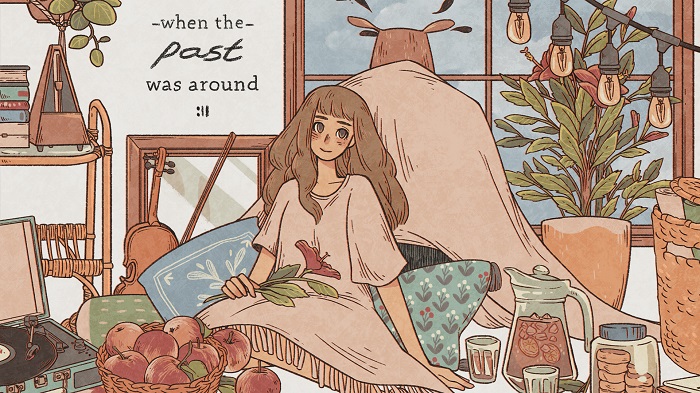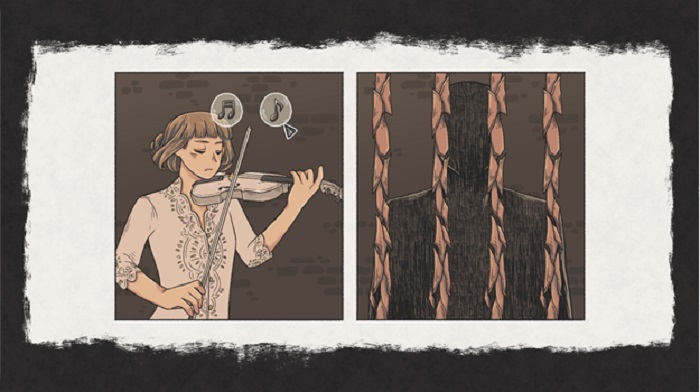Play at SEA: A Short but Memorable Story of When the Past was Around
By Jeremy Cheong January 15, 2021
- Beautifully hand-drawn art style making it feel like an interactive anime or manga
- A complex and touching story hidden behind simple point-and-click puzzles

Due to the Covid-19 pandemic and being stuck at home for most of 2020, I managed to finish quite a number of games. Many of them were triple-A, big-budgeted titles with over 30 hours of gameplay, multiple endings based on the choices you make, incredibly detailed graphics, and fairly complex game mechanics that combined stealth and guns-blazing action.
However, none of them was quite as memorable as the indie point-and-click puzzle adventure, When the Past was Around. Developed by Indonesia-based Mojiken Studio, the game - created by a team of eight -- recounts a bittersweet story of love, loss and grief. In other titles, these themes are often used as motivation for protagonists to seek bloody revenge or overcome insurmountable odds.
But in When the Past was Around, the real battle is the process of grieving itself -- in finding closure and the strength to move on by reliving moments of a loved one who is no longer around.

Bittersweet Tale of Love and Loss
The game takes place over five chapters (six, if you count the prologue) that revolve around Eda and how she copes with the loss of her lover, the handsome and talented violinist, Owl. At the start of the game, Owl is represented as a shadowy figure locked in a cage, but as Eda revisits the memories they share -- presented here as puzzles -- he slowly regains a more recognisable form.
The story is predictable and there aren’t any plot twists or shocking endings, but it depicts Eda’s emotional journey very well. The game may appear fantastical and fairytale-like, but Eda and Owl’s relationship is a relatable one. It’s not just about sweeping romantic date nights or heartstring-tugging moments, but also the mundane side of relationships like a coffee date at home, or laundry day.

According to Brigitta Rena, one of the creators and Art Director for the game: “We wanted to create a game that players could easily relate to and this is why we added in little details like Eda and Owl’s favourite drinks, date spots, etc. We drew inspiration from our own romantic experiences and the everyday things we do with our own partners in hopes that it will help to convey that feeling of what it feels like to lose someone so dear to us.”
It works. It’s easy to get swept up in Eda’s and Owl’s emotional journey, as we’ve all been there one way or another -- the warmth and romance of a date by the beach; the anguish and pain when Owl is no longer part of Eda’s life.
Like a Truly Vivid Memory
Driving the story and emotions home are the terrific art and music. Rena, who provided the art for the game, drew inspiration from the works of illustrators such as Puuung, Maori Sakai and Yuko Higuchi, as well as manga-like The Ancient Magus’ Bride and The Girl from the Other Side.
The style doesn’t just lend a gentle, fairy tale quality to the game, but is also practical. “We chose to go with this art style so any artist, in-house or contracted, could work on the art of the game with very little briefing. To make it even easier for the team, we also decided to go with a realistic approach for the objects players interact with and that are scattered around in the game,” Rena tells Digital News Asia.

“Furthermore, from our previous experience working on She and the Light Bearer, a realistic art style is easier for artists to achieve than a stylised art style, which has its own rules and is harder for anyone to learn and master in a short time.”
The result is a visually arresting game, so much so that I spent quite a bit of time admiring the little details in each scene instead of solving the puzzles. It also effectively captures the emotions Eda or Owl are going through.
The game plays out like a silent movie -- there is no spoken dialogue, just sound effects and humming. The tone, instead, is set by the background music, which is this incredibly catchy song Eda and Owl wrote together. The mood and tone of the song changes depending on the scenario: during the happier moments, it is lighthearted and whimsical. As Eda faces her more painful memories, it gets increasingly tense. But one thing is for sure, I ended up humming those same four notes subconsciously.
An Easy Puzzle to Solve
In terms of gameplay, When the Past was Around isn’t the most difficult point-and-click puzzle game out there. In fact, I completed the game in about an hour or so. For those who are more adept at solving puzzles and who spend less time poring over the little background details, the game can be completed in less time.
With that said, I found the puzzles to be enjoyable and many of them actually hide little nuances of Eda and Owl’s relationships. One of the sweetest ones I found is the combination of a padlock that is unlocked by matching the numbers with the alphabets that spell out “Eda”. I chuckled as I figured this puzzle out, as I know many of us to do the same with our passwords and smartphone pin codes. Puzzles also sometimes require backtracking to a previous scenario for clues or items.

When the Past was Around may be short, but its story and beautiful art style made it truly memorable for me. To me, it’s more of an interactive storybook or short film that lets the narrative experience shine through. For those who are going through a rough patch or tough period, the game is a reminder that things will get better.
It’s ultimately what Rena wishes for players. “What I truly want players to feel while playing When the Past was Around is know that there is always hope,” she says.
“It doesn't matter if you have lost a loved one or lost interest in your work or hobby. It is okay to take your time and mourn at your own pace. One day, you will find a solution to your puzzled mind, just like Eda.”
"Play at SEA" is a collaborative series between Digital News Asia and Malaysia Digital Economy Corporation (MDEC). These articles will shine a spotlight on Southeast Asia video games and their creators.
Related Stories :


